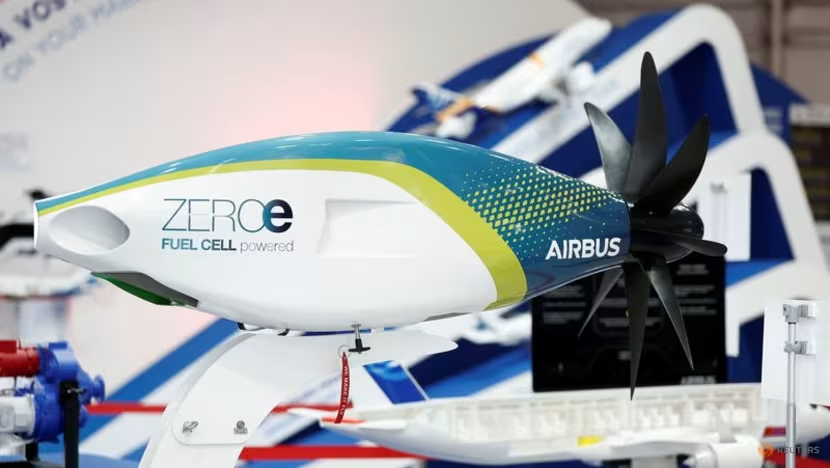A Bold Step Toward Sustainable Aviation
In a significant move to decarbonize the aviation sector, the United Kingdom has pledged £250 million (approximately $340 million USD) to develop and support cutting-edge clean technologies for air travel. This ambitious initiative aims to position the UK at the forefront of the global aerospace industry, while contributing to global climate targets and driving innovation in green aviation.
Government and Industry Collaboration for the Future
The funding, announced as part of a joint initiative between the UK government and aerospace industry leaders, is designed to foster collaboration in researching and developing solutions that drastically reduce carbon emissions from flights. The investment will be administered through the Aerospace Technology Institute (ATI) Programme, a long-term partnership between government and industry that has already supported dozens of successful R&D projects in aerospace.
UK Business and Trade Secretary Kemi Badenoch stated:
“The UK has a proud aviation heritage. By supporting emerging technologies today, we’re ensuring our aerospace sector continues to lead the world while meeting our net zero goals.”
Key Areas of Investment
The £250 million investment will target a range of advanced research areas designed to make air travel more sustainable and efficient. These include:
1. Zero-Emission Flight Technologies
A significant portion of the funding will go toward the development of zero-emission aircraft, including battery-electric and hydrogen-powered planes. These innovations aim to eliminate reliance on fossil fuels for domestic and regional flights. Researchers will focus on scalable propulsion systems, lightweight materials, and the infrastructure required for clean fuel supply and storage.
2. Laser-Beam Manufacturing
Another key focus is laser-beam manufacturing, a form of advanced additive manufacturing that enhances precision and reduces material waste during aircraft production. This technique not only improves performance and safety, but also reduces the environmental footprint of aircraft construction by minimizing emissions and energy consumption.
3. Aerodynamic Drag Reduction
Investments will also support the development of new aerodynamic designs and materials that reduce drag on aircraft surfaces. Less drag translates into lower fuel consumption and emissions during flight, which is especially critical for long-haul and commercial aviation.
Supporting the UK’s Net Zero and Economic Goals
This funding is part of the UK’s broader commitment to achieving net zero emissions by 2050, a legally binding target set by the government. The aviation industry, known for its carbon-intensive operations, is a critical sector in need of transformation.
The investment is also expected to support high-skilled jobs across the UK. According to government estimates, the ATI Programme and related aerospace initiatives have already supported more than 81,000 jobs since their inception. The new funding round will secure and create additional roles in engineering, research, manufacturing, and green technology.
Boosting the UK’s Global Competitiveness
The UK’s aerospace sector is one of the largest in the world, and this investment is intended to ensure it remains globally competitive. By fostering home-grown innovation, the government hopes to attract international interest, investment, and export opportunities. In 2023, the UK’s aerospace exports exceeded £32 billion, and with the global demand for green aviation on the rise, this figure is poised to grow.
Sir Michael Ryan, Chair of the Aerospace Technology Institute, commented:
“This funding reinforces our vision for a cleaner and more prosperous aerospace sector. The UK is well-positioned to become a global leader in sustainable aviation if we act now.”
Technology in Action: Recent Success Stories
The ATI Programme has already backed several groundbreaking projects, such as:
-
Hydrogen-powered flight testing: UK firms have successfully tested hydrogen propulsion systems on small aircraft, setting the stage for larger commercial trials.
-
Electric aviation engines: Companies like Rolls-Royce and Vertical Aerospace have made substantial progress in developing electric propulsion systems for urban air mobility and short-haul flights.
-
Advanced materials: Research into carbon composites and shape-memory alloys is helping create lighter and stronger aircraft components, improving fuel efficiency.
These projects demonstrate how targeted funding can yield real-world innovations that benefit both the economy and the environment.
An Eye on the Future: What’s Next?
Looking ahead, the UK plans to build on this momentum with further investments, policy support, and international cooperation. Future goals include:
-
Establishing a network of zero-emission flight corridors between UK cities.
-
Building infrastructure for hydrogen and electric fueling at airports.
-
Encouraging regulatory frameworks that accelerate certification of green aircraft technologies.
Moreover, the ATI will continue to support startups and small-to-medium enterprises (SMEs) that bring fresh ideas and agility to the aerospace ecosystem.



